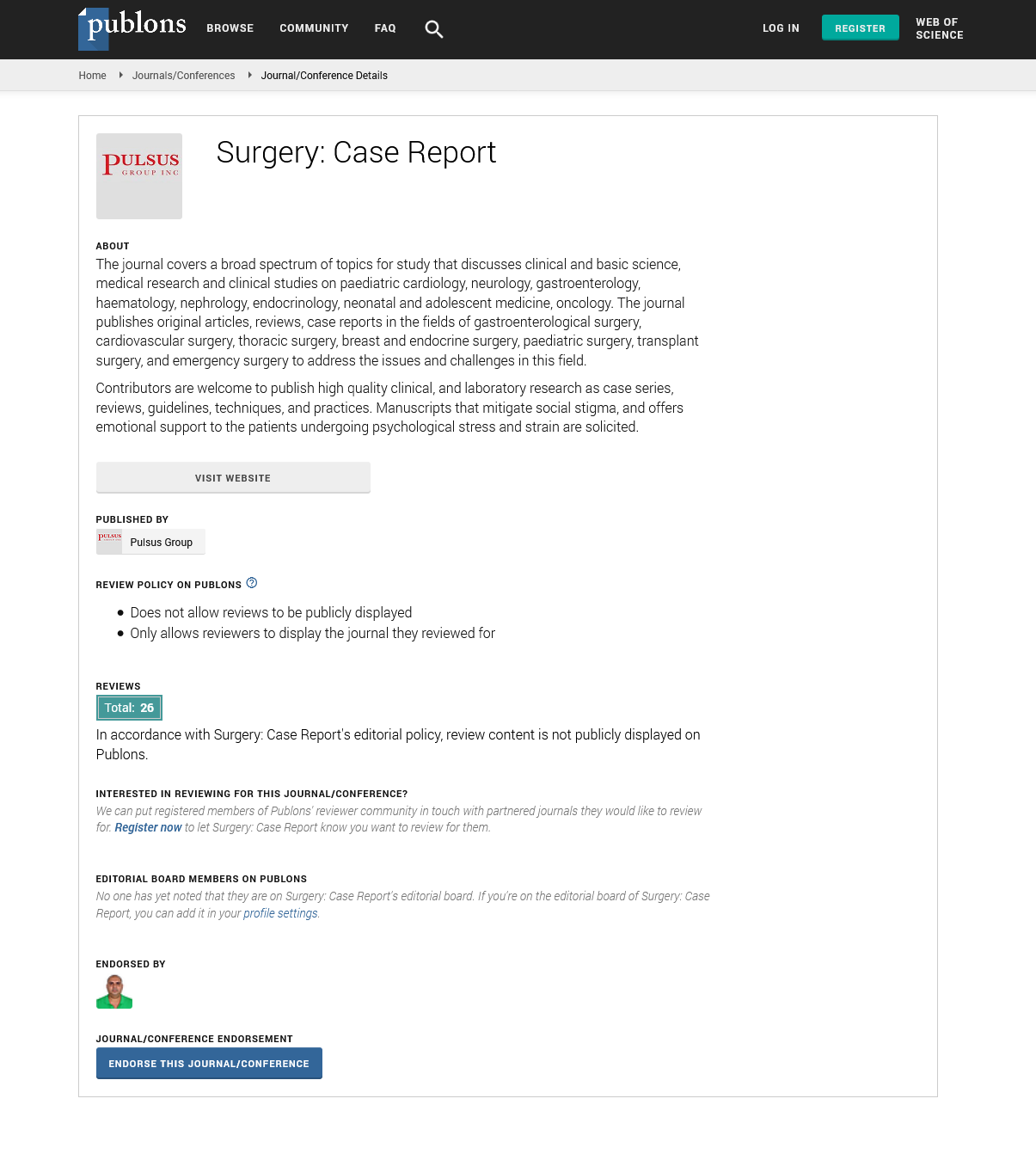Cataract and cataract surgeries: An overview
Received: 02-Nov-2021 Accepted Date: Nov 16, 2021; Published: 23-Nov-2021
Citation: Kjaer AA. Cataract and cataract surgeries: An overview. Surg Case Rep. 2021; 5(6):4.
This open-access article is distributed under the terms of the Creative Commons Attribution Non-Commercial License (CC BY-NC) (http://creativecommons.org/licenses/by-nc/4.0/), which permits reuse, distribution and reproduction of the article, provided that the original work is properly cited and the reuse is restricted to noncommercial purposes. For commercial reuse, contact reprints@pulsus.com
Commentary
The term “cataract” frequently conjures up a lot of worry, uncertainties, misconceptions, questions, and terror in the minds of those who are afflicted by it or their family members. This pamphlet seeks to dispel common misconceptions and fallacies regarding cataracts and current treatment options. Cataracts can occur at any age, from birth to old age, although they are more frequent in the elderly, especially beyond the age of sixty. By the age of ninety, over 98 percent of people have had cataracts in some form. A reduction in vision for distant and/or near objects is the most common sign of cataract. Reduced vision in bright or low light, diminished contrast, changed colour appreciation, seeing multiple pictures of the same thing, quick changes in the number/power of glasses, or discomfort, redness, and watering are some of the other symptoms. The pupil becomes pearly white in hue and there is a total loss of vision in severe instances. None of these symptoms, however, are unique to cataracts.
When a patient’s cataract is diagnosed, the therapy is mainly surgical. The patient might have surgery if he believes his eyesight has deteriorated to the point that it is interfering with his everyday activities. In some circumstances, however, if there are related problems or possible risks of complications, an early procedure may be necessary; in these cases, you should follow the opinion of your Consulting Eye Surgeon. The following procedures are used to treat cataracts:
Phacoemulsification
It is a minor incision cataract surgery with no stitches, injections, or dressings. In phacoemulsification, a 3 mm slit is created into the cornea, and the lens nucleus is transformed into a soft pulp and vacuumed out using ultrasonic waves. Then a foldable lens (IOL) is inserted into the capsular bag through the tiny incision. Early recovery and reduced astigmatism are two of the most significant benefits of this procedure. Non-foldable IOLs are not recommended since they require widening the incision, negating the benefits of the short incision. All of these procedures are performed under local or topical anaesthetic, which numbs or paralyses the eye and prevents the patient from feeling discomfort even while he or she is awake. Only young and difficult patients are given general anaesthesia, which comes with its own set of dangers. Tropical or eye drop anaesthetic is the recommended technique of anaesthetic administration. This not only eliminates the need for painful injections and an eye bandage, but it also lowers the danger of injection anaesthesia.
Intra-ocular Lenses (IOL)
Intra-ocular Lenses (IOLs) are tiny, soft polymer lenses that are placed inside the eye to replace the natural lens. The most significant benefit of an IOL is the clear, broad field of vision it provides, as well as the fact that the patient does not need to wear heavy glasses all of the time. Because, unlike natural lenses, the IOL has a set power that is normally adjusted such that the midrange or regular viewing distances are seen clearly, low-power glasses may still be necessary, especially for reading distant and near tiny print. Because the IOL remains in the eye for the rest of one’s life, it should be of the highest quality possible. Multifocal IOLs provide the benefit of clear far and close vision, reducing the need for glasses, but they also have the downside of decreased contrast, poorer colour saturation, and a subjective picture quality compromise.
Small Incision Cataract Surgery (SICS)
For challenging cases, SICS has almost completely supplanted traditional cataract surgery. Despite the fact that the incision is somewhat bigger, around 5-6 mm, and the nucleus is removed using fluid pressure, no sutures are necessary, and recovery is faster and more comfortable than with traditional surgery. To summarize, the surgeon, surgical technique, and IOL quality are not the only factors that influence the outcome of cataract surgery. It also relies on the state of the eye, cornea, and retina, as well as the existence of systemic disorders such as diabetes, hypertension, asthma, and infections. The quality of the operating rooms, ancillary and backup facilities, as well as the training of the support team, all have a substantial impact on the surgery’s outcome. Assuring high quality in all of these areas raises the surgery cost for the patient, but it’s important to remember that our eyes are worth much more. Before surgery, certain tests are conducted, including using a special ultrasound equipment to evaluate the curvature and length of the eyeball. This aids in the calculation of the implanted IOL’s power. Other tests, such as blood, urine, ECG, and others, may be required to determine the patient’s overall fitness.
The majority of patients may be discharged the same day following cataract surgery. It’s common to experience itching, sticky eyelids, and slight pain following surgery. There is also some fluid discharge. A fair level of recovery will take around 4 weeks in most circumstances. Mild discomfort, irritation, redness, and watering are frequent after effects of cataract surgery, although they usually go away after a few days. Although complications following surgery are infrequent, they can arise. Infection, haemorrhage, increased pressure inside the eye, inflammation, haziness of the cornea, and retinal detachment are all possible symptoms. Any such issue should be reported to an eye surgeon right once, especially if there is significant discomfort, vision loss, or flashing lights. After age of 50, routine eye check-ups are required to detect eye disorders early and provide prompt treatment. Regularly wearing UV protective sun glasses to avoid exposure to UV rays may provide some protection. Any study or studies, on the other hand, do not support this hypothesis.






